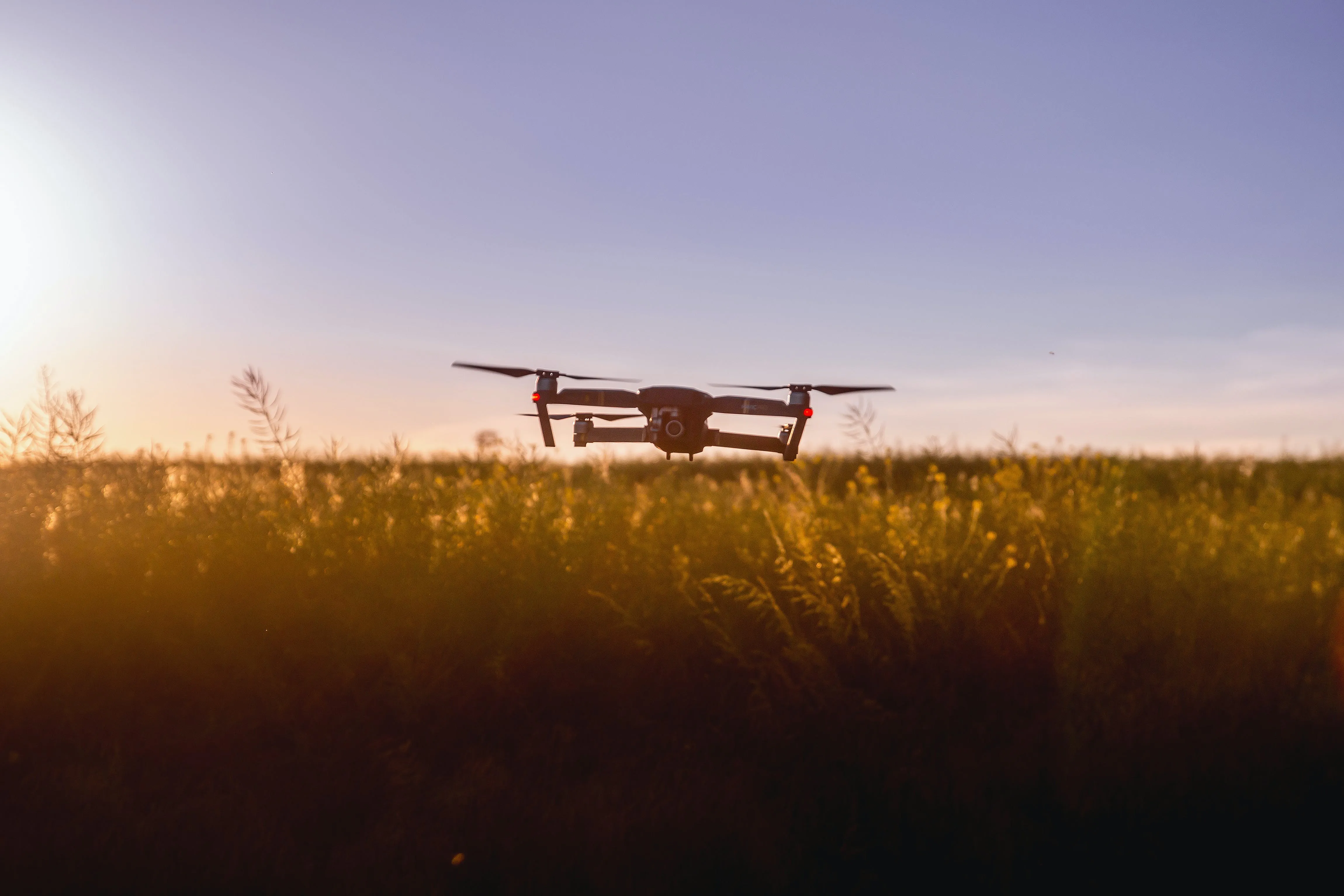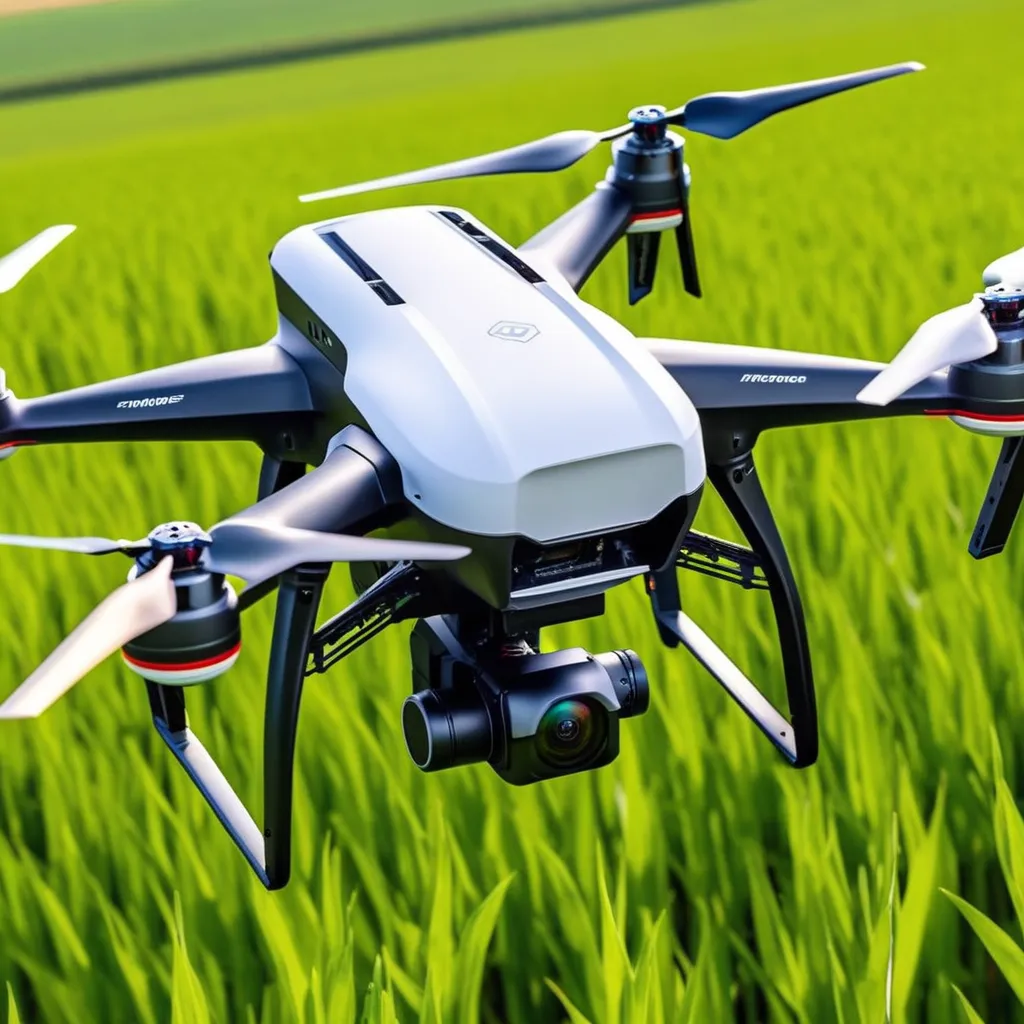The Future of Drones in Agriculture: A Revolution in Farming
Soaring High: Drones Transforming Agriculture

Introduction: A Glimpse into the Skyward Revolution
Picture this: a vast expanse of fields, lush green as far as the eye can see, and above it, a drone gracefully gliding through the air. This isn't a scene from a futuristic movie; it's the present and the future of agriculture. Drones are ushering in a revolution, reshaping the landscape of farming as we know it.
1. Precision Farming Takes Flight: The Role of Drones
Drones in Agriculture: More Than Just Aerial Views
Gone are the days when farmers relied solely on intuition and traditional methods. Drones equipped with advanced sensors and cameras provide a bird's-eye view, offering invaluable data about crop health, soil conditions, and irrigation needs.
Personal Anecdote: Eyes in the Sky
I spoke to a farmer who, until recently, spent hours surveying his fields on foot. Now, with a drone, he can assess the entire farm in a fraction of the time. The efficiency gains are not just about saving time but making better-informed decisions for a healthier yield.
2. Crop Monitoring and Disease Detection: Swift Action from Above
Aerial Vigilance: Identifying Problems Before They Spread
Drones armed with multispectral cameras can detect subtle changes in crop color and growth patterns, signaling potential issues like pest infestations or diseases. This early detection allows farmers to target specific areas with precision, minimizing the need for widespread pesticide use.
Personal Anecdote: Nipping Problems in the Bud
Imagine a scenario where a farmer spots a small patch of discolored crops. In the past, this might go unnoticed until it spread. With drone technology, these signs are caught early, akin to addressing a sniffle before it turns into a full-blown cold.
3. Precision Spraying and Seeding: Maximizing Resources
Smart Agriculture: Optimizing Input Efficiency
Drones equipped with precision spraying systems can target specific areas, delivering pesticides or fertilizers only where needed. This not only reduces the environmental impact but also optimizes resource use, leading to cost savings for farmers.
Personal Anecdote: Less is More
I spoke to a farmer who, after adopting drone-assisted precision spraying, noticed a significant reduction in the amount of pesticides used. It's a win-win situation – cost savings for the farmer and a more environmentally friendly approach to farming.
4. The Future Landscape: Drones and Artificial Intelligence
Next-Level Farming: Integrating AI for Data Analysis
As technology advances, the synergy between drones and artificial intelligence (AI) holds immense potential. AI can analyze data collected by drones, providing insights that go beyond human capacity. This includes predicting crop yields, optimizing irrigation schedules, and even identifying the most favorable times for planting.
Personal Anecdote: AI as the Farming Partner
I attended a demonstration where an AI system analyzed drone-captured data to recommend optimal planting times. It felt like witnessing a collaboration between farmer intuition and cutting-edge technology, a glimpse into the future of agriculture.
5. Overcoming Challenges: Integration and Regulation
Navigating the Airspace and Regulations
While the benefits of drone technology in agriculture are undeniable, challenges such as airspace management and regulatory frameworks must be addressed. Striking the right balance between innovation and safety is crucial for widespread adoption.
Personal Anecdote: Navigating New Horizons
I chatted with a farmer who highlighted the need for clear regulations. He likened it to learning to navigate a new landscape – challenging but necessary for the promise that drones hold for the future of farming.

Conclusion: Cultivating the Future with Drones
As we look ahead, it's evident that drones are more than just gadgets for aerial enthusiasts. They are becoming indispensable tools for farmers, shaping the future of agriculture. The sky is not the limit; it's a vast expanse of possibilities, and drones are leading the way in revolutionizing how we cultivate the land.







